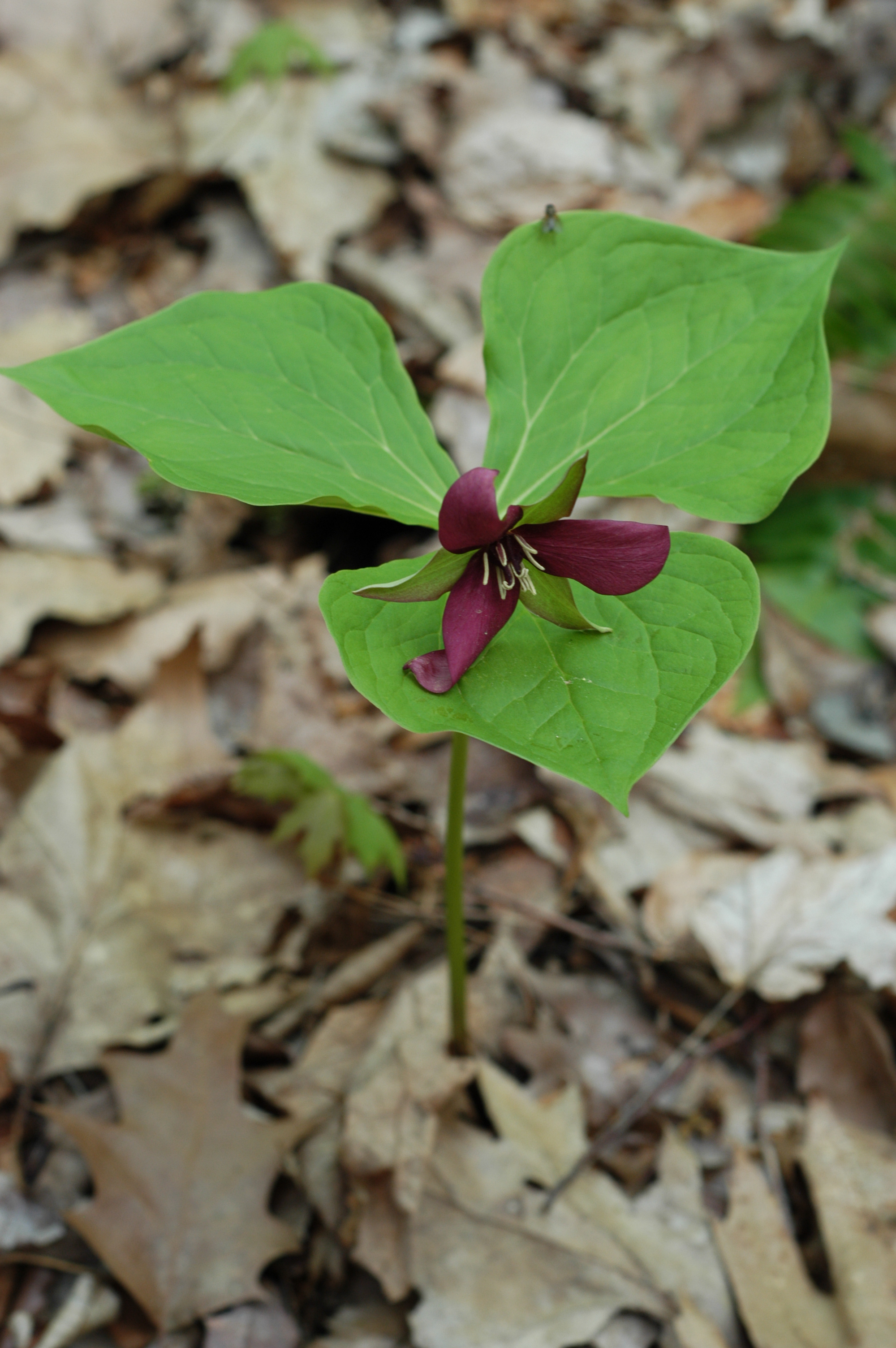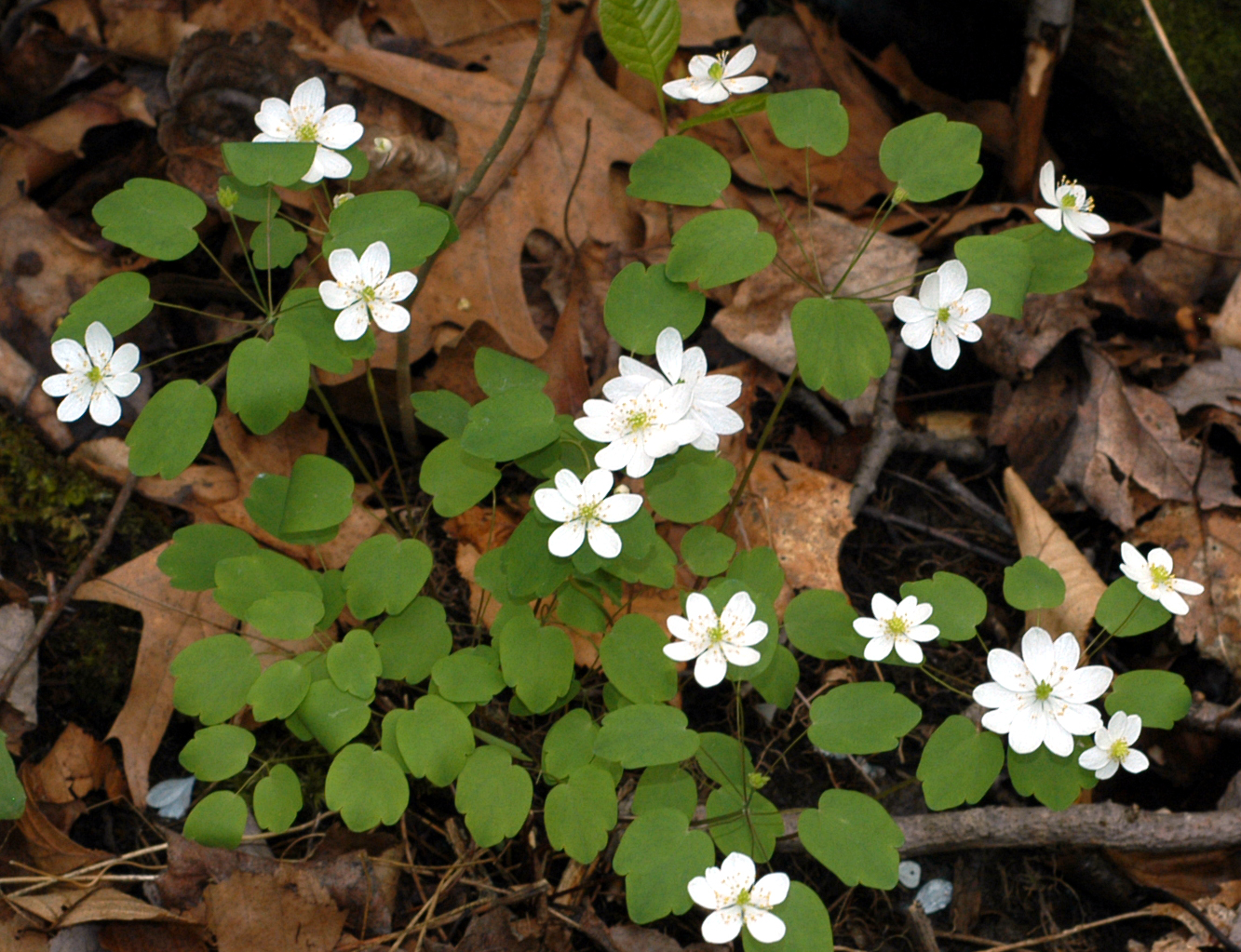|
Habitats
Terrestrial
System. Forested Uplands Subsystem--
Maple-basswood rich mesic forest community
|

|
|
|
Trillium erectum
|
|
Physical Setting: This is probably the largest community
within the study site. It occurs on the east-facing
slopes.between the un-named highest western hill and the Ice
Pond. The area is roughly rectangular in shape and covers
approximately 250,000 square meters. The approximate center is at
41.454ºN, 73.616ºW and about 180 meters above sea
level.
Substrate and Hydrology: Rich
mesic forest occurs on well-drained but moist circumneutral
soils.
Biota: Native
tree, shrub and herb diversity relatively high. The dominant
trees are Liriodendron
tulipifera, Fagus
grandifolia, Betula
lenta, Betula
alleghaniensis, Quercus
rubra, Prunus
serotina, Quercus
velutina, Fraxinus
americana, Carya
cordiformis, Acer
saccharinum and Ulmus
americana. The basswood, Tilia
americana is present, but not
common. Lindera benzoin,
Viburnum acerifolium,
Hamamelis virginiana,
Acer pensylvanicum,
Carpinus caroliniana,
Ostrya virginiana,
Cornus florida and
Cornus alternifolia
dominate the shrub layer. Composition of the herb layer appears
to be largely determined by available water. The herb layer of
drier areas (generally on slopes) is dominated by the fern
Polystichum acrostichoides
and Maianthemum canadense.
Wildflowers in wetter areas include Smilacina
racemosa, Polygonatum
biflorum, Trillium
erectum, Caulophyllum
thalictroides, Cardamine
diphylla, Arisaema
triphyllum var. triphyllum,
Thalictrum thalictroides,
Sanguinaria canadense,
Asarum canadense.
The spring ephemeral, Hepatica
americana is rare. Lianas include
many fine specimens of Vitis
aestivalis and a few isolated
populations of Celastrus
orbiculatus.
|
 |
|
Thalictrum thalictroides
|
Cultural: The
terrain is either steep and rocky (unsuitable for agriculture) or
it is level or gently sloping and was heavily used for crops and
grazing. The uneven ages and large diameter of the trees on the
steep slopes suggests that these areas have not been cleared in a
very long time.
|